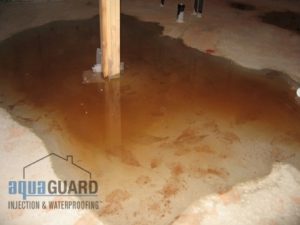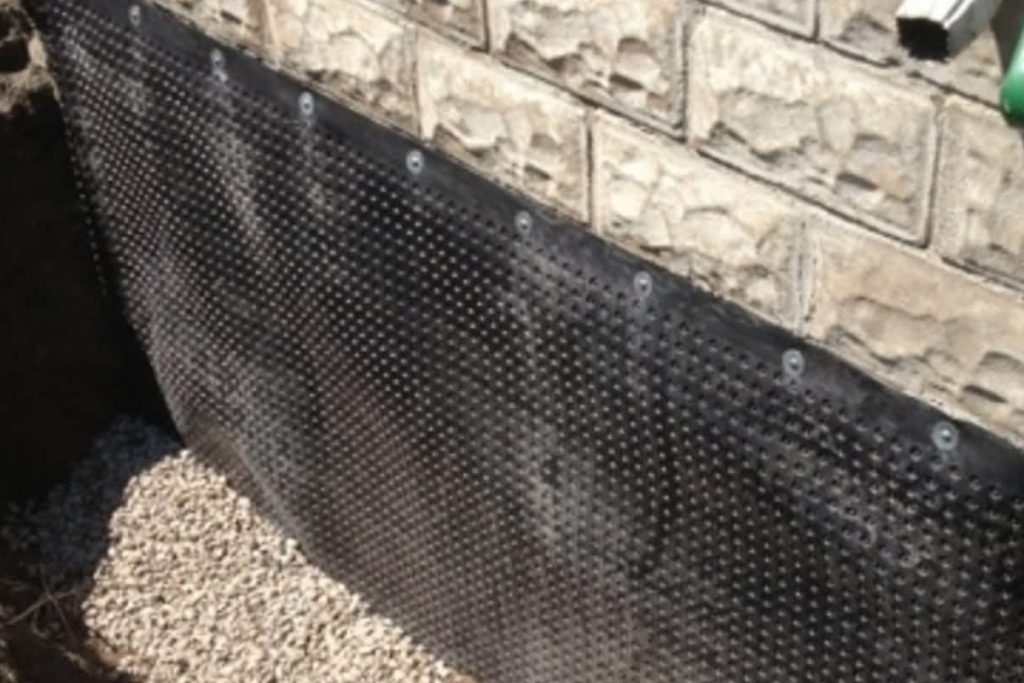
Basement waterproofing, a generally unregulated trade within the construction industry, is carried out by waterproofing contractors and quite often by general contractors. There are many facets to basement waterproofing including, but not limited to, hydrology, soils, sealants, drain installation, carpentry, foundation construction and masonry.
Approaches to Basement Waterproofing
The fundamental point in discussing basement waterproofing is that there are really two approaches to waterproofing a basement. One approach is to waterproof a basement from the inside and the other is to waterproof a basement from the outside. In addition to the foundation types to which each type of waterproofing applies, in this blog, we discuss different types of basement waterproofing associated with both approaches. We also offer supplementary resources to provide you with greater detail concerning each waterproofing technique so that you can better understand the different basement waterproofing methods and their recommended applications.
Internal Basement Waterproofing
With very few exceptions, virtually any basement leak can be stopped using internal basement waterproofing methods. Internal basement waterproofing is accomplished using two methods: interior weeping tile system installation, or interior French drain installation, and foundation crack injection.
Interior weeping tile systems are used to control the water coming from basement leaks in both poured concrete and concrete block / cinder block foundations. This type of basement waterproofing technique is effective in remedying basement leaks from foundation cracks, cracked mortar joints in concrete blocks, tie-rod holes, snap-rod holes, pipe penetrations, and honeycombing. Fundamentally, an interior weeping tile system installation involves the installation of drain pipe beneath the basement floor slab around the perimeter of the leaking walls of a basement. In combination with an air-gap membrane, which is fastened to the wall or walls being waterproofed, this drain system channels the water entering the basement to a sump pump which mechanically evacuates the water. It is beyond the scope of this article to discuss this basement waterproofing method in further detail however, properly installed, this method of basement waterproofing does not fail. Learn more about interior weeping tile system installation.
Foundation crack injection is a basement waterproofing method which applies only to poured concrete foundations and structures. It is, by far, the most economical way of stopping basement leaks where water is coming through poured concrete foundation walls. It is important to note that injection does not apply strictly to cracks; in fact, injection, because it involves the pressurized injection of resins, can be used to fill any void or crack in a poured concrete foundation. The pressurized injection of either a polyurethane or epoxy resin into a void is an effective basement waterproofing method because voids are completely filled therefore, the voids or cracks that were at the origin of a basement leak effectively no longer exist.
Pressurized injection, as described above, is arguably the most widely used waterstopping and concrete crack repair method worldwide. Pressurized injection of polyurethane is used in many commercial applications, for example, polyurethane injection is used extensively for the purpose of waterstopping in underground mining applications, subway tunnel wall crack repair, leaking sewer pipe joint waterproofing, etc. Polyurethane injection is also ideal in applications such as waterstopping of underground parking garage leaks or any leak through poured concrete foundation walls.
External Basement Waterproofing
External basement waterproofing is the alternative waterproofing method to interior weeping tile system installation and pressurized injection. Until recently, this basement waterproofing method was virtually the only method that was available to property owners for waterproofing a basement. External basement waterproofing is an excellent way to prevent water from leaking into your basement through the foundation walls. Unfortunately, in addition to being the most destructive, it is usually the most expensive way to waterproof a basement.
External basement waterproofing is often referred to as external excavation and waterproofing. This basement waterproofing method is accomplished by excavating that part of a foundation which needs to be repaired due to an existing basement leak and applying a waterproof barrier and a damp-proofing membrane onto the wall. Furthermore, external basement waterproofing usually involves weeping tile replacement in order to improve the general drainage around the footing of the home. The materials used to successfully externally waterproof a basement wall are of paramount importance and, therefore, should be a major consideration when selecting which contractor to hire to externally waterproof a foundation.
The decision as to the best basement waterproofing method to use to waterproof your basement involves many factors. It is for that reason we recommend you consult a “professional” waterproofing contractor able to categorically identify all the issues relating to waterproofing your basement specifically. By following our recommendation, you will be choosing the best approach for your particular circumstances.
